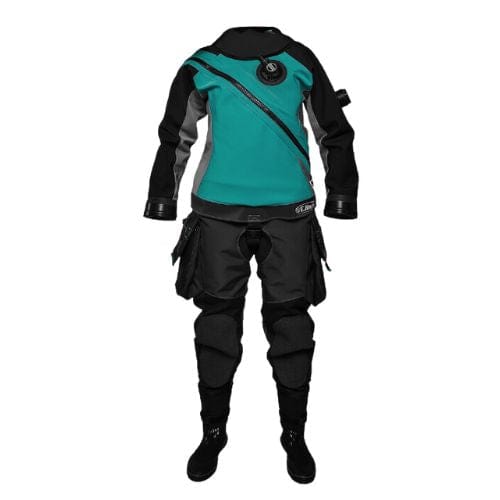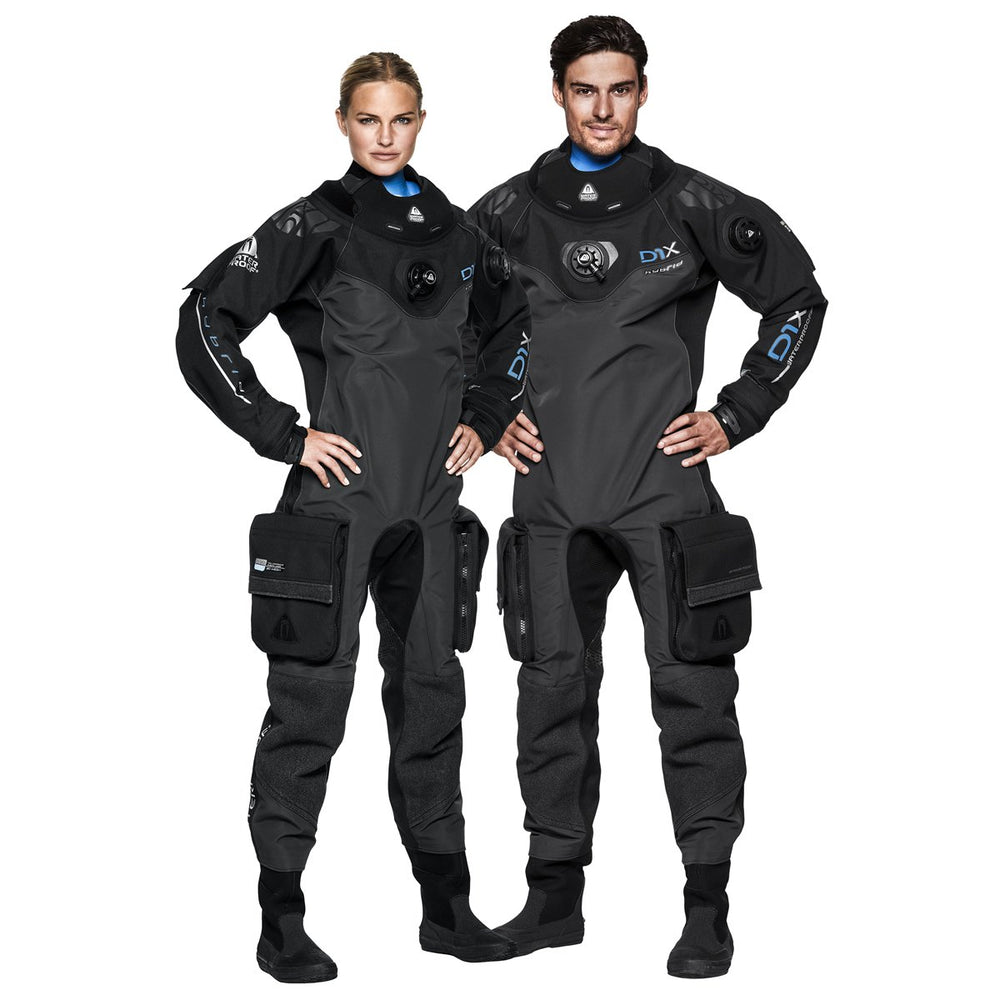Drysuits are a vital piece of equipment for divers who want to stay dry and comfortable in the water. They protect divers from the elements, preventing hypothermia and allowing them to focus on their dive.
When choosing your first drysuit, there are a few things to keep in mind:
-
Waterproof construction: Drysuits are made from waterproof materials, such as neoprene or nylon, that prevent water from penetrating the suit.
-
Warmth: Drysuits are insulated to keep you warm in cold water.
-
Comfort: Drysuits are designed to be comfortable to wear, even for extended periods of time.
-
Durability: Drysuits are made to last, even in the harshest conditions.
Here are some of the most popular drysuit brands:
-
Fourth Element Drysuit: Fourth Element is a leading manufacturer of drysuits, offering a wide range of features and styles to suit all levels of divers.
-
Bare Drysuit: Bare is another leading manufacturer of drysuits, known for their high-quality construction and materials.
-
Waterproof Drysuit: Waterproof is a popular brand of drysuits, known for their durability and affordability.
-
Aqualung Drysuit: Aqualung is a well-known brand of diving gear, and they offer a variety of drysuits to suit all levels of divers.
-
Typhoon Drysuit: Typhoon is a newer brand of drysuits, but they have quickly become popular due to their high-quality construction and features.
When choosing a drysuit, it is important to try it on in person to make sure it fits properly. You should also consider the type of diving you will be doing, the water temperature, and your budget.
Here are some questions to ask yourself when choosing a drysuit:
-
What type of diving will I be doing? If you will be doing a lot of cold water diving, you will need a drysuit that is well-insulated. If you will be doing mostly warm water diving, you may be able to get away with a less insulated drysuit.
-
What is the water temperature where I will be diving? If you will be diving in cold water, you will need a drysuit that is rated for the appropriate water temperature.
-
What is my budget? Drysuits can range in price from a few hundred dollars to a few thousand dollars. It is important to set a budget before you start shopping.
Once you have considered all of these factors, you will be able to choose the right drysuit for your needs.
Here are some additional tips for choosing a drysuit:
-
Consider the type of closure system you want. Drysuits come with a variety of closure systems, including back zips, front zips, and zipperless systems. Back zips are the most common type of closure system, but they can be difficult to put on and take off. Front zips are easier to put on and take off, but they can be less comfortable to wear. Zipperless systems are the most comfortable to wear, but they can be more difficult to get in and out of.
-
Choose the right thickness of insulation. Drysuits come with a variety of insulation thicknesses, from thin to thick. The thickness of insulation you need will depend on the water temperature where you will be diving.
-
Consider the features you want. Drysuits come with a variety of features, such as built-in hoods, built-in pockets, and wrist seals. The features you need will depend on your personal preferences and the type of diving you will be doing.
By following these tips, you can choose the right drysuit for your needs and stay dry and comfortable while diving.
Here are some additional things to consider when choosing a drysuit:
-
Brand: There are many reputable brands of drysuits on the market, so it is important to do your research and find one that is known for its quality and durability.
-
Warranty: Many drysuits come with a warranty, so be sure to read the terms and conditions carefully before you make a purchase.
-
Customer service: If you have any questions or problems with your drysuit, it is important to be able to get in touch with a customer service representative who can help you.
By taking the time to choose the right drysuit, you can ensure that you have a safe and enjoyable diving experience.


































